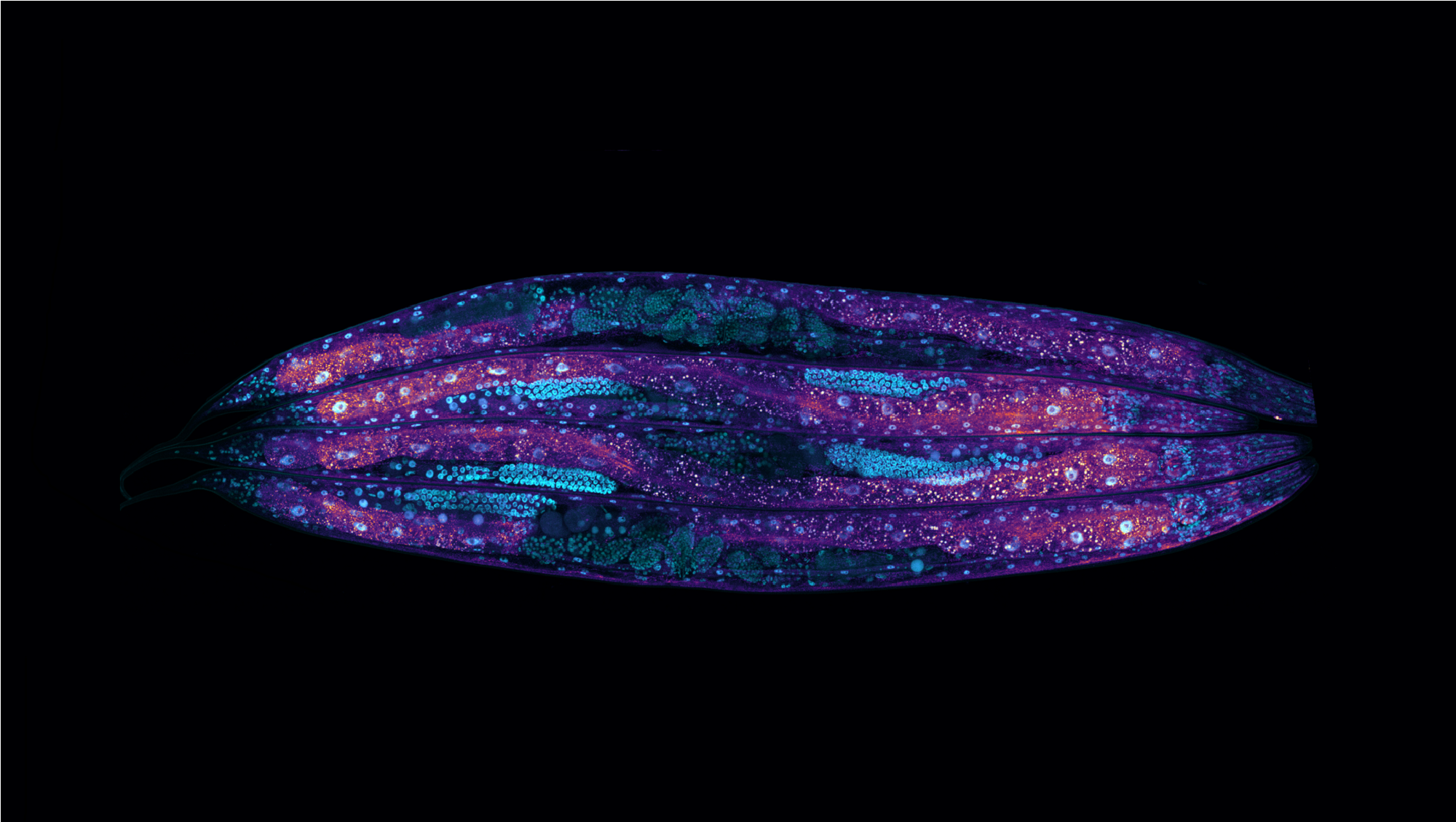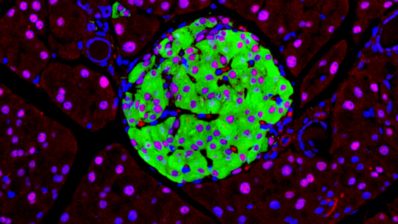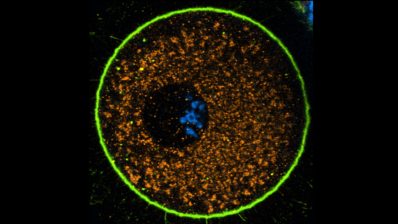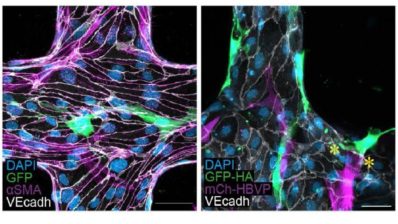In this composite image by Jeremy Vicencio and Nadia Halidi, we can see fluorescent-tagged nuclei in every cell of five different Caenorhabditis elegans worms captured in the Advanced Light Microscopy Unit at the Centre for Genomic Regulation (CRG).
The image is part of a study done at Nick Stroustrup’s lab, where they looked into why some worms lived longer than others.
The researchers used their ‘Lifespan Machine’, a device which follows the entire lives of thousands of nematodes at once. The worms live in a petri dish housed inside the machine under a scanner that images them once per hour, gathering data about their behaviour.
They observed genetically identical worms in the same controlled environment (same diet, temperature, etc) and identified a group of at least 40 different genes that interact to make some individuals live longer than others – although the difference in lifespan seemed to be due to random differences in the activity of these genes.
Want to see your photo here? Send us images related to science or life in the PRBB to ellipse@prbb.org.
Matthias Eder, Olivier M.F. Martin, Natasha Oswal, Lucia Sedlackova, Cátia Moutinho, Andrea Del Carmen-Fabregat, Simon Menendez Bravo, Arnau Sebé-Pedrós, Holger Heyn, Nicholas Stroustrup. Systematic mapping of organism-scale gene-regulatory networks in aging using population asynchrony. Cell, 2024 Jul 25;187(15):3919-3935.e19.doi: 10.1016/j.cell.2024.05.050. Epub 2024 Jun 21






